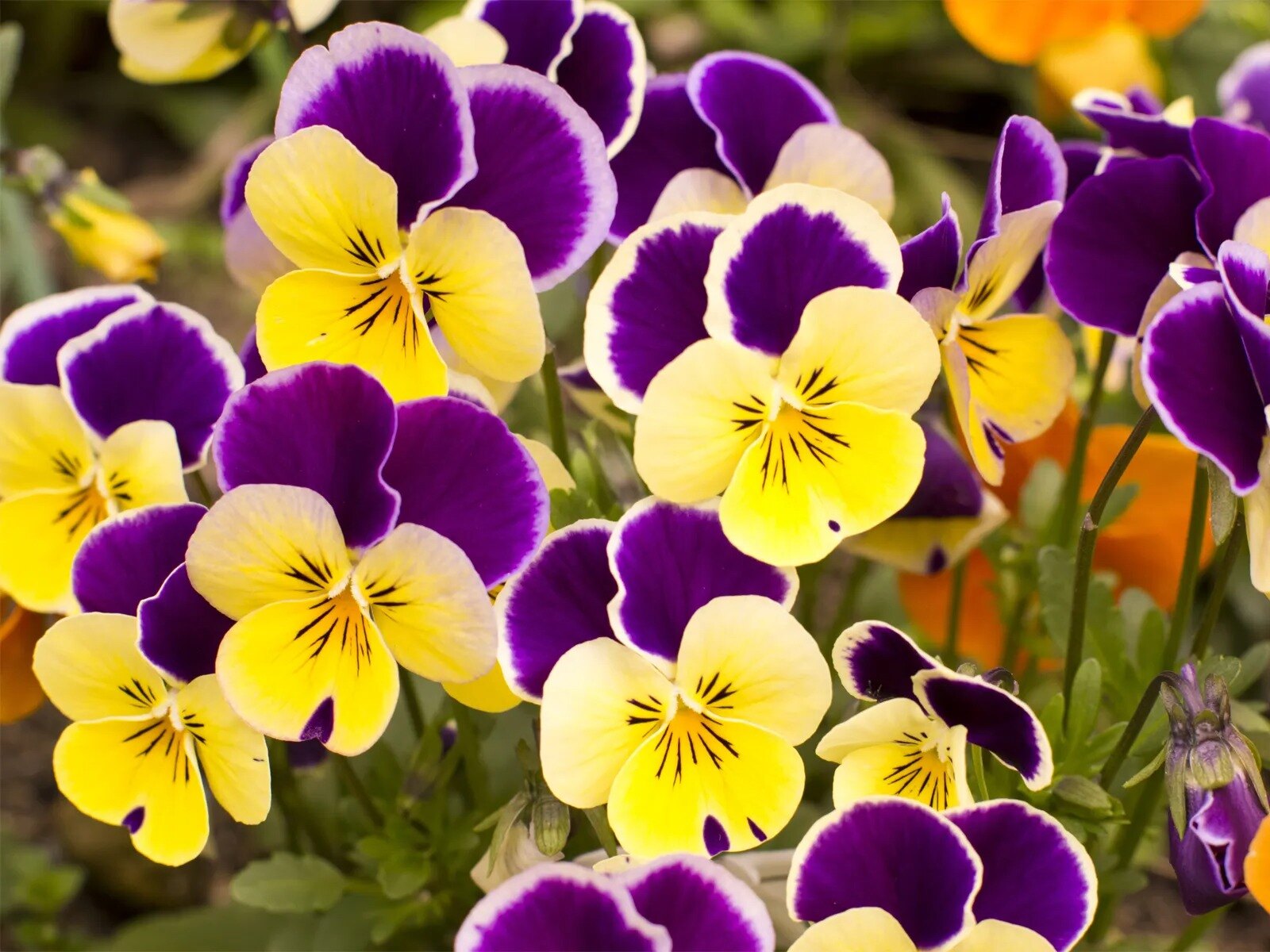
Pansies are more than just pretty flowers in your garden. These vibrant blooms have a rich history and fascinating characteristics that make them stand out. Did you know that pansies are edible and often used in salads and desserts? They come in a wide range of colors, each with its own unique pattern, making them a favorite among gardeners and florists alike. Pansies are also known for their hardiness, able to thrive in cooler temperatures when many other flowers cannot. Whether you're a gardening enthusiast or just curious about these charming flowers, you'll find these 31 facts about pansies both surprising and delightful.
Pansies: A Colorful History
Pansies are more than just pretty flowers. They have a rich history and many interesting facts that make them unique.
-
Origin: Pansies originated in Europe and Western Asia. They were first cultivated in the early 19th century.
-
Name: The name "pansy" comes from the French word "pensée," meaning thought or remembrance.
-
Symbolism: Pansies symbolize love, admiration, and remembrance. They are often associated with free thought.
Pansies in Literature and Culture
Pansies have made their mark in literature and culture, appearing in various works and traditions.
-
Shakespeare: William Shakespeare mentioned pansies in his play "A Midsummer Night's Dream."
-
Victorian Era: During the Victorian era, pansies were used in "floriography," the language of flowers, to convey secret messages.
-
Art: Pansies have been a popular subject in art, especially in paintings and botanical illustrations.
Unique Characteristics of Pansies
Pansies have some unique characteristics that set them apart from other flowers.
-
Heart-Shaped Petals: Pansies are known for their distinctive heart-shaped petals.
-
Variety of Colors: They come in a wide range of colors, including purple, yellow, blue, and white.
-
Edible: Pansy flowers are edible and often used in salads and as garnishes.
Growing Pansies
Growing pansies can be a rewarding experience. Here are some interesting facts about their cultivation.
-
Cool Weather: Pansies thrive in cool weather and are often planted in the fall or early spring.
-
Sunlight: They prefer partial to full sunlight but can tolerate some shade.
-
Soil: Pansies grow best in well-drained soil rich in organic matter.
Pansies and Pollinators
Pansies play a role in the ecosystem by attracting pollinators.
-
Bees: Bees are attracted to the bright colors and sweet nectar of pansies.
-
Butterflies: Butterflies also visit pansies for their nectar.
-
Self-Pollination: Pansies can self-pollinate, ensuring their survival even without pollinators.
Pansies in Medicine
Pansies have been used in traditional medicine for various purposes.
-
Skin Conditions: Pansy extracts have been used to treat skin conditions like eczema and acne.
-
Respiratory Issues: They have been used to alleviate respiratory issues such as bronchitis and asthma.
-
Anti-Inflammatory: Pansies possess anti-inflammatory properties that can help reduce swelling and pain.
Fun Facts About Pansies
Here are some fun and lesser-known facts about pansies.
-
Hybridization: Most modern pansies are hybrids of the wildflower Viola tricolor.
-
Longevity: Pansies can live for up to two years in the right conditions.
-
Fragrance: Some pansies have a mild, sweet fragrance, especially the yellow and blue varieties.
Pansies in Mythology and Folklore
Pansies have their place in mythology and folklore, adding to their mystique.
-
Love Potions: In folklore, pansies were often used in love potions and spells.
-
Fairy Flowers: Some myths suggest that fairies use pansies as hats or shoes.
-
Dreams: It is believed that placing pansies under your pillow can bring pleasant dreams.
Pansies in Modern Times
Pansies continue to be popular in modern gardening and decoration.
-
Container Gardening: Pansies are ideal for container gardening due to their compact size.
-
Seasonal Displays: They are often used in seasonal displays, especially in spring and fall.
-
Landscaping: Pansies are a favorite in landscaping for their vibrant colors and easy maintenance.
Pansies and Environmental Benefits
Pansies offer several environmental benefits, making them a valuable addition to gardens.
-
Erosion Control: Their roots help prevent soil erosion.
-
Air Purification: Pansies can help purify the air by absorbing pollutants.
-
Biodiversity: Planting pansies can increase biodiversity in your garden by attracting various pollinators.
-
Companion Planting: Pansies can be used in companion planting to deter pests and improve the growth of neighboring plants.
The Final Petal
Pansies aren't just pretty flowers; they're packed with fascinating facts. From their vibrant colors to their medicinal uses, pansies have a lot to offer. These flowers can survive in cold weather, making them a favorite for gardeners. Pansies also have a rich history, symbolizing love and remembrance.
Whether you're a gardening newbie or a seasoned pro, adding pansies to your garden can bring both beauty and benefits. They attract pollinators, can be used in cooking, and even have health benefits. Plus, their easy-to-grow nature makes them perfect for anyone looking to add a splash of color to their outdoor space.
So next time you see a pansy, remember there's more to this flower than meets the eye. Happy gardening!
Was this page helpful?
Our commitment to delivering trustworthy and engaging content is at the heart of what we do. Each fact on our site is contributed by real users like you, bringing a wealth of diverse insights and information. To ensure the highest standards of accuracy and reliability, our dedicated editors meticulously review each submission. This process guarantees that the facts we share are not only fascinating but also credible. Trust in our commitment to quality and authenticity as you explore and learn with us.


